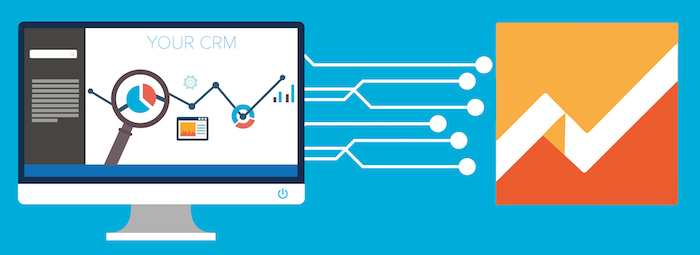Some products demand a very specific conversion strategy. If yours includes a process of generating leads through your website to nurture and follow up offline, then you may face an issue which has plagued marketers for years.
While it may make your old-school PPC account manager feel warm inside to see a healthy rate of conversion from form fills and phone calls, that often isn’t a good indicator of campaign success anymore.
The modern day digital marketer needs to understand which clicks are turning into sales and not just the ones that are generating interest.
So, where does the problem lie, and what can you do about it?
The problem
Let’s say you spend $100,000 each on two separate campaigns. Campaign A generates 1,000 online leads, whereas Campaign B generates only 500.
Using this information alone, you would probably choose to focus your resources on Campaign A as it seems to offer a better ROI. However, the problem lies in the fact that the lead-to-sale conversion rate is rarely consistent across different campaigns, keywords and channels.
If Campaign B converted its 500 leads at a rate of 50% and Campaign A only managed 10%, then it puts a dramatically different perspective on the success of both. The more granular you get with conversion analysis, the better you’ll understand these conversion rates and the more effectively you’ll be able to allocate your budgets.
When you’re spending $50 a click in some valuable and competitive markets, then it is a necessity rather than a bonus.
Failing to recognize and tackle this issue can mean you’re not aware of which of your leads are good or bad, and can cause a whole host of other issues including:
- Manual work to review and feedback on lead quality
- Not knowing which keywords are actually generating sales, so you can’t optimize AdWords/paid marketing accordingly
- Wasted ad spend on keywords that generate low-quality web leads
The solution
There are ways to tackle the problem, though. Digital marketers usually optimize their campaigns in one of two places:
- Ad platforms such as AdWords or Doubleclick (or perhaps a third party management platform like Marin or Kenshoo)
- Analytics platforms – such as Google Analytics, Adobe Analytics or IBM Analytics (formerly Omniture and Coremetrics)
To make this optimization more effective you need information about your final offline sales to be visible in those systems. This is now a straightforward process and can be achieved much easier than most people think.
The examples below are for AdWords and Google Analytics, but you may also need to explore other methods using your own specific setup and platform.

Injecting offline conversion and activity into Google Analytics
Using your analytics platform to hold information about offline activity and conversions, that started with an online journey, is the best solution to problem. This will give you a solution that works for all your online efforts and not just a specific ad platform.
For this to work, you need to make it possible for users to share an ID between their online sessions and your CRM database. This is then used to record what happens with the customer once you have their details.
There are two possible ways to do this, by using either the UserID method, which is the most effective, or the Client ID method.
Here’s how you can implement these changes:
UserID method
Google Analytics (GA) now has the ability to link sessions across devices and even activity that occurs offline (perhaps at the point of sale in a shop, or a face to face sales meeting).
It does this by making use of a feature called UserID tracking. This UserID is an ID that you set to uniquely identify each visitor to your website in your CRM. You probably already have this ID in your CRM.
In each session/hit that a user interacts with your website, you make a small customization to the tracking script to output this ID. This then enables GA to link this activity together whether it is on the same device, a different one or even offline. To implement this, take the following steps:
- Set up a UserID view in Google Analytics (GA) – You need to create a new view that will have the sole purpose of presenting all sessions and activity that has a UserID associated with it.
- Output that UserID at every opportunity – The most important time to do this is during the session that they originally make an enquiry in. Your technology needs to be integrated enough and capable of saving information submitted in a form in your CRM, getting the ID from that CRM record and then outputting it to the “Thank you” page of the form that the user has just submitted. Once this ID is output in the original, lead generating session you have the ability to join your offline activity with that session. More importantly, you will better understand the channels that drove it. Find out more information here: https://support.google.com/analytics/answer/3123662?hl=en
- Inject offline activity back into GA – Next, you need to be able to customize your business system so that it’s able to execute some very basic code when something you are interested in tracking occurs. This might be a sale when an enquiry turns into a ‘qualified enquiry’, when a sales visit occurs or any number of other checkpoints. You have to make use of what is called the Google Analytics measurement protocol to inject this data. Although this may sound complicated, it really couldn’t be much simpler. All the change does is allow your system to generate a simple URL (such as the one below) in a predefined format or protocol.
POST http://www.google-analytics.com/collect
v=1&tid=UA-XXXXX-X&cid=1234.9876&uid=123&t=pageview&dp=%2Fdummypv&z=ud7ckjr
The values of the parameters relate to what type of information you want to put into GA. More information and a reference to the measurement protocol can be found here:
https://developers.google.com/analytics/devguides/collection/protocol/v1/reference
https://developers.google.com/analytics/devguides/collection/protocol/v1/devguide
And that is it! One point to note is that to make UserID as effective as possible, it’s worth taking every opportunity to output the UserID to the web sessions of people when you know who they are. This could include:
- Storing this ID in a cookie so it is available in future sessions – important if your site does not require login
- Outputting this UserID whenever they log in
- Including this UserID in email marketing to set and store the UserID when they click a link
- Any other opportunity you get to inform the web browser that the user has an ID

ClientID method
As mentioned above, there are two possible ways to link your offline activity to online leads. If you do not have the ability to integrate your website and CRM fully to output the UserID on the ‘Thank you’ page after a form is submitted, then there is an alternative.
The ClientID is an internal ID that GA uses to identify an individual. The ‘Client’, in this sense, relates to the software client, most probably the web browser or app. Instead of pulling an ID from your CRM to output on your website, this method is slightly simpler in that you only need to capture the ClientID and ‘push’ it with the lead information they send.
GA provides an interface/function to capture this ClientID, which means you don’t have to go looking in cookies yourself – it is as follows:
ga(function(tracker) {
var clientId = tracker.get(‘clientId’);
PLACE CODE HERE TO UPDATE THE ‘VALUE’ OF THE HIDDEN FIELD WITH clientId.
});
You then simply find a way of populating a hidden field in your web forms with this value. You can then use this ClientID with the measurement protocol as described earlier.
Importing offline conversion into Google AdWords
Of course, if you implement the GA method above, then you have the option of importing GA goals into AdWords. However, if you prefer to import offline conversion data directly into AdWords, then there is now functionality to do so. The following steps should be followed if you wish to do this:
- Enable auto-tagging – You need to enable auto tagging which will automatically put a parameter called ‘gclid’ onto each URL when someone clicks an ad. This parameter will contain a string value that uniquely identifies the click.
- Capture the above-mentioned gclid parameter – When someone lands on the site, or the landing page contains the gclid parameter, then you need to program your site to capture this value and store it (probably in a cookie). This is a relatively simple task, especially if you use the script provided by Google shown here: https://support.google.com/AdWords/answer/2998031?hl=en-GB
It becomes even easier if you have Google Tag Manager installed, which makes this a two-minute job.
- Push the gclid ID into your CRM when a lead is completed – When a form is submitted, you need to ensure that you take the gclid parameter value out of the cookie (mentioned in point two) and then place this in a hidden field. That way, it’s ready for your CRM to record this against the lead it records.
- Push conversions back into AdWords – When one of the leads you accept, with a gclid against it, goes on to complete offline conversions (such as buying something), then you need to push this information back into AdWords. There are two ways of doing this, you can either:
- Upload a CSV or Excel file with the details of the conversion and the gclid it belongs to. This also contains other information like the conversion date. You can process a full batch of these at a time (perhaps every day or week). You can even automate this using AdWords scripts.
- Upload using the AdWords API – this is a more advanced method but is the most effective, and allows you to push conversions in instantly as they occur.
What about phone enquiries?
There are phone tracking systems on the market now that allow you to individually link online sessions to a phone call (for example Infinity or ResponseTap).
You can make a small customization to these systems to hold the information you send it from the web browser. This will enable the system to work with the above AdWords and GA (ClientID) methods. Although, there is a little more custom development required.
So, what does this all mean?
In summary, understanding the true value of the clicks you are buying or generating allows you to make a better-informed decision about their importance. This knowledge is what separates the market leaders, from the market followers.
In a competitive market, having confidence that a keyword is generating $2 per click instead of $1 can be the difference between setting bids that put you at the top of Google, or the bottom.

